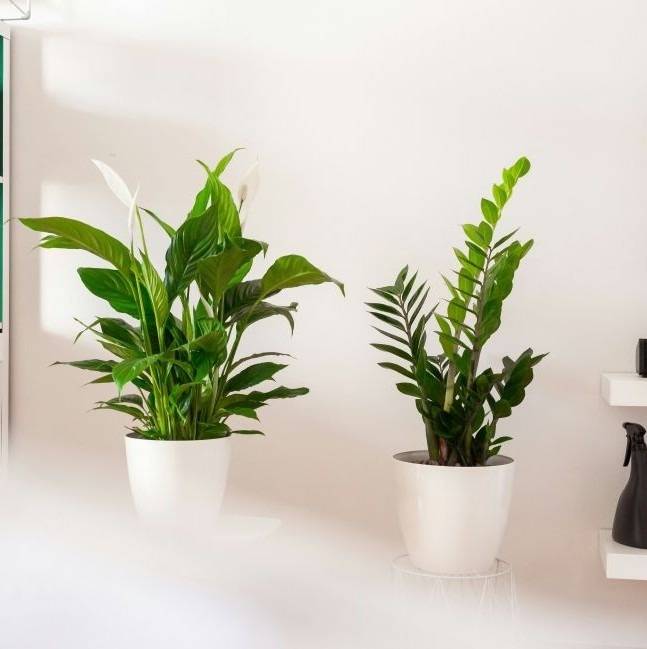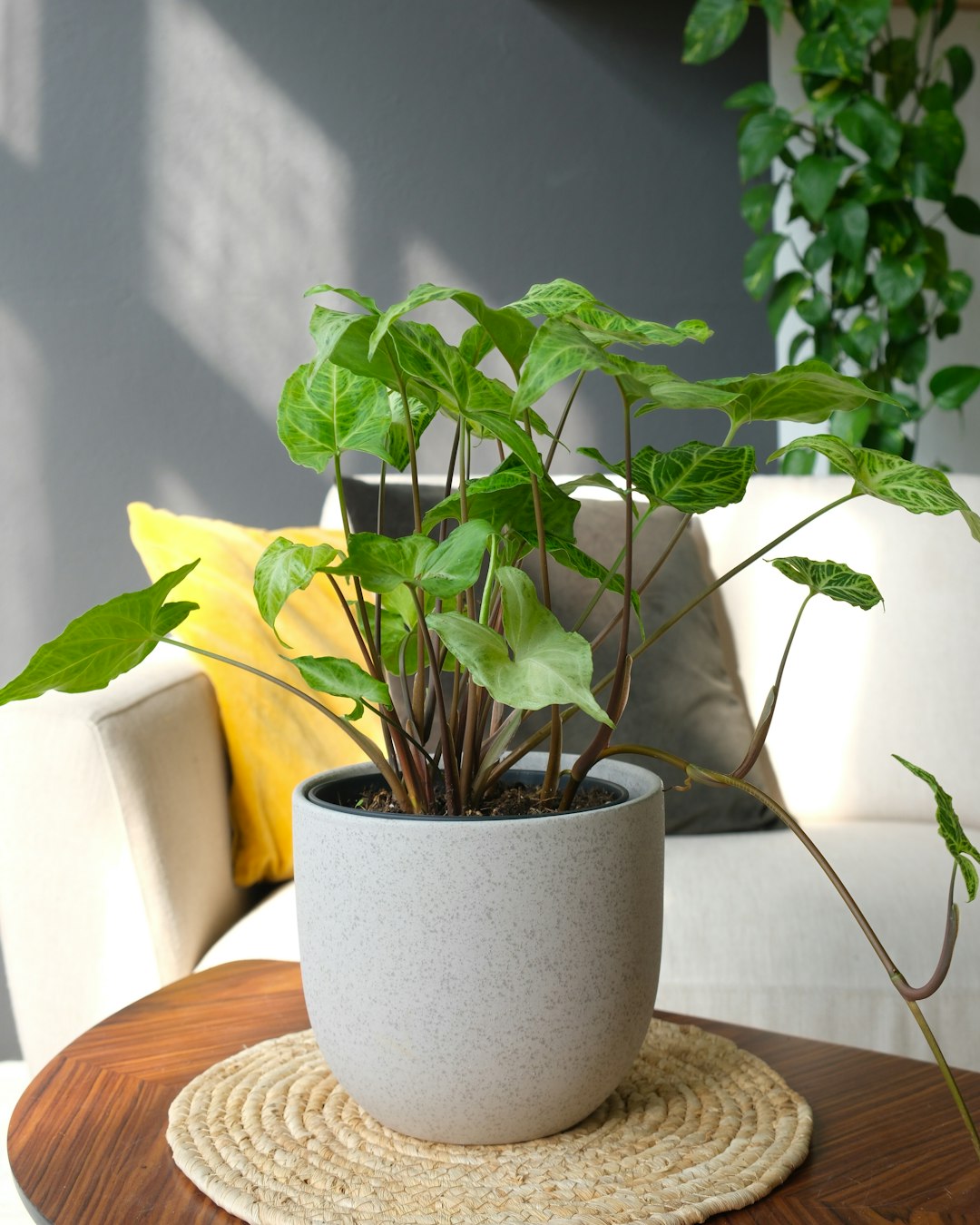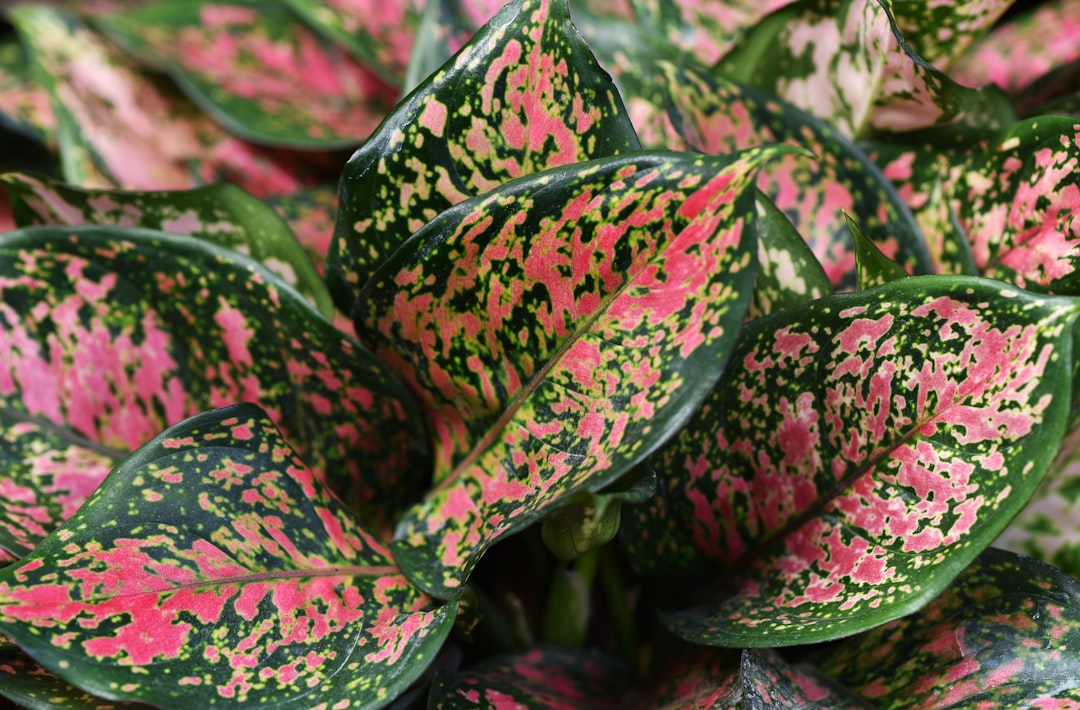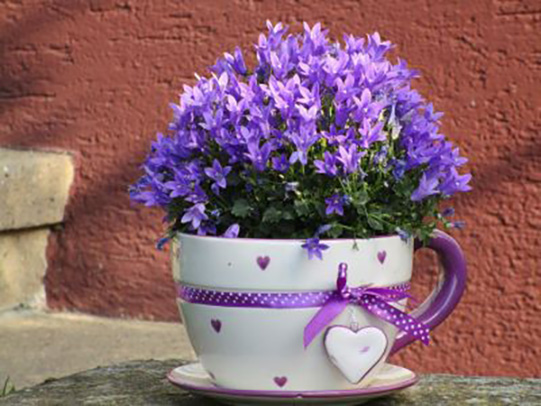Spending a lot of time at home lately? Now that it's winter, are you feeling a bit confined, and finding the air a bit stuffy? Do you need to breathe some life into your workspace, or encourage peace and relaxation in your living area? One of the best ways to tackle those issues is to add some live plants to your home.

Low Maintenance Houseplants for an Easy Care Indoor Sanctuary
Bringing in a bit of green allows you to connect with nature, relieve stress, boost your mood, and even improve the air you breathe. It doesn't have to be difficult if you make the right choices--instead of a fussy, high-maintenance house guest, you can have a mellow, relatively self-sufficient friend for life. Read on for our suggested list of easy care houseplants that will make you glad they were invited, and click here for general indoor plant growing tips
Pothos & Heartleaf Philodendron - Tried and True Trailers
All three of these will grow best in bright to medium indirect light and will tolerate low light for extended periods, although color and variegation may be lost. Let dry slightly between waterings and always keep these houseplants above 55 degrees. Any of them will make a terrific hanging basket that will look best if pruned to keep full and fat—just pinch back a few of the stems close to the center every now and then, and trim any long, leggy growth. The cuttings will grow easily in water. Since they form aerial roots, they can also be grown up a bark or mossed pole if some height is desired.
- Popular heartleaf philodenron varieties include 'Brasil' with chartreuse markings and P. micans (velvet philodendron) with smaller, very dark green leaves and bronze new foliage.
- Common pothos varieties include green and white streaked 'Marble Queen,' gold splashed 'Golden,' chartreuse 'Neon,' and 'Njoy' and 'Pearls and Jade' with heavier white variegation, the latter two being a bit less vigorous. Newer 'Baltic Blue' pothos has a bluish tinge and slits in the leaves somewhat resembling those of monstera plants.
- Scindapsus varieties include 'Exotica,' Silver Splash,' silver spotted 'Argyraeus,' and softly silvered 'Moonlight.'


Snake Plants - The Easiest Houseplants EVER
Perhaps examine some of the less typical varieties if you haven’t seen a snake plant in a while. My favorite is 'Bantel’s Sensation'-- tall narrow leaves with heavy vertical brushstrokes on a dark green background. It has a softer look that blends in very well with today’s interior neutral color schemes. 'Sayuri' has similar coloring with leaves 2 to 3 times as wide as Bantel’s. 'Moonshine' has even broader very pretty, solid silvery-light green leaves on a shorter plant generally more suited as a tabletop houseplant than a floor plant.
If you’re looking for an adorable small houseplant for the bathroom or another dimly lit spot, the birds nest Sansevieria can’t be beat, with short rosettes of thick pointed leaves in your choice of green/yellow/silver variegations. All snake plants grow in height very slowly, so be sure to get the size you need to start with.
In addition to the typical long & narrow leaved types, there are also species with cylindrical (S. cylindrica), very wide (S. masoniana) leaves, or grassy-appearing leaves. S. cylindrica can be presented as an upright clump, arranged as a flat fan, or several stems braided together, while S. masoniana, often called whalefin snake plant, is most often planted with one very large leaf per pot. Sansevieria hybrid 'Fernwood' has quite narrow leaves tightly curled inward along the length for a finer, grassier (yet still stiff) texture.
By the way, they're also terrific and adaptable accents in mixed containers. I've seen them summering outside, faring well with thirstier New Guinea impatiens. They're also great for adding height to a mixed succulent planting. And did I mention it’s a tough, tough plant? Next time you’re in southern Florida, look for some growing at the beach. They won’t look as pristine as the one in your living room, but they’re surviving to the point that they are currently assessed as a high risk for invasiveness. So, NOT one to plant in the ground in areas where it may overwinter, but a fine and study choice as an indoor plant.
FYI, the genus Sansevieria has recently been removed and snake plants are now officially Dracaena species. For instance, S. cylindrica is now Dracaena angolensis. But since most of us don't keep up with those things, especially the companies that make plant tags, we'll stick with Sansevieria for a while longer. If you really want the new botanical names, just let us know.
Aglaonema - The Perfect Office Plant
Aglaonema, also called Chinese evergreen, tolerates low light, but will grow best in medium to bright indirect, especially those with pink and red hues to keep the colors from fading. Let dry between waterings and avoid direct sun and cold. Even brief periods below 55 degrees can cause damage to these houseplants—dark, greasy spots will appear days to even more than a week after exposure. Ags are the perfect desk & office plant, performing well in bright fluorescent light.
Dracaena - One Genus, A Plethora of Easy Care Houseplants
Madagascar dragon tree (D. marginata) has long, slim, horizontally ridged leafless stems, or canes, with a head of long, very narrow, pointed foliage. The stems are often twisted, braided, or created with other unusual contortions and odd angles. They may also be found potted with the crown at soil level, with no trunks at all. Canes of different heights can be placed in the same pot for a tiered or columnar effect. 6, 8, or 10" pots of crown-level planted types are generally available, with "trees" grown in 10, 12, or 14 inch pots. Green leaves are edged in red; cultivars have linear striping in varying shades of pink, cream, yellow, and green. 'Colorama' and 'Ray of Sunshine' are particularly vibrant choices.
Corn plant, or what is known in the industry as “Mass Cane” (short for the cultivar name ‘Massangeana’) bears wider, sturdier canes topped with broader yellow and green striped leaves 2 feet in length. Corn plant, as well as many other varieties of dracaena, is often grown with several canes of various heights in one pot. This creates an interesting specimen with heads of foliage at staggered heights, the taller ones making excellent tall floor plants. Tabletop and low floor plants are created by using only the growing tips, for a fatter, bushier appearance. Most often offered in 10, 12, or 14 inch pots at heights from 2 feet to 6 feet. In my experience, mass cane plants prefer to dry out more--that may be because they are not well-rooted from the grower when sold and roots in the pots are minimal. Beware, as rotten canes will usually not be noticeable until it’s too late.
The popular lucky bamboo is not a bamboo, but a small dracaena variety that can be grown directly in an inch or so of water. They are often braided or woven into decorative designs.
My favorite dracaena include ‘Rikki’ with narrow lime green leaves edged in dark green, ‘Whitney,’ dark green with feathery white striping, and ‘White Aspen’, white leaves with a broad central stripe of deep green. Always popular are ‘Lemon Lime’ with stripes of green, chartreuse and white, and ‘Limelight’ in solid electric chartreuse. These are generally available in 6, 8, or 10 inch pots.
Peace Lily - Not a Lily, Just a Great Houseplant
All varieties prefer being pot bound and flower best that way, so no need to worry about repotting for a while. Basically you can leave it in the same pot until it's impossible for you to keep it watered. The key to a peace lily is to NEVER LET IT WILT, but don’t keep it constantly wet. It sounds hard, but it really isn’t. It can and should dry out a bit between waterings, but NOT to the wilting point, which will cause leaves to yellow. It will survive a wilt or two to allow you to gauge the timing, but if that’s your regular houseplant watering routine trade this in for a snake plant and call it a day.
Spider plant - A Simple, Pet-safe Houseplant
The plant can eventually take on massive proportions, filling out a hanging basket in a hurry, especially when summering outside in the shade or semi-shade. Try it in your shade containers, mixed with New Guinea impatiens, coleus, or ferns. Being less cold-sensitive than other houseplants, it will last long into the fall outside. There are several cultivars available, one with reverse variegation and 'Bonnie,' with very curly leaves. These are most commonly offered in hanging baskets and 4 or 6 inch pots.
If it appears a bit unkempt at times, you can remove the flowering stems, or you can bring the babies back into the pot and plant, leaving the stem attached until it roots in. Once there’s resistance to a gentle tug, you can remove the stem at both attachment points. Give it medium to bright indirect light, let it dry somewhat between waterings, and it will reward you with more and more little friends.
And according to the ASPCA, it's non-toxic to both cats and dogs. FYI, cats may find them tasty, and they might throw up after they eat it, much like when they eat grass. So you may want to get some hairball remedy and put the plant out of reach anyway, or you'll end up with a pot of little green nubs, like I did!
Tillandsia - No Pot Required!
At the trade shows folks wait their turn to take selfies wearing the tillandsia wig, although I doubt that’s something you need at home. They do look charming under a small cloche, in a glass orb, or popping out of a small contemporary styled vase if coastal décor is not your thing. There’s almost nothing you can’t do with them--just don’t let them dry out completely or leave them too damp for too long (the closed terrarium not a good spot).
When blooming, tillandsias display brightly colored, showy bracts that house their small flowers, and like other bromeliads, they will die after flowering. However, they should produce new "pups," small plantlets attached to the mother plant, that will continue to grow.
Neanthe Bella Palm - A Tabletop-Sized Indoor Palm
Best sited in bright, indirect light, but will tolerate medium or even low for a time if you’re rotating plants throughout the home. Inadequate light will result in a leggy habit. Let it dry out a bit between waterings. Fertilizing once a month during spring and summer will be beneficial. All palms are subject to spider mites, so make sure the plant is clean before you buy—look for stippled leaves and webbing, or even pin point sized yellow or red creatures moving slowly under the leaves if it’s heavily infested. And then don’t buy that one, or any other plants nearby. Dry conditions encourage spider mites so regular misting can help, or for a small plant run the foliage (not the pot and soil) under the faucet once a week.
ZZ Plant - This Houseplant Gets Straight A's for Ease of Care
Few named cultivars exist at this point, but notable is ‘Raven’ for its dramatic dark black foliage that provides a sophisticated accent in any room. Most often sold in 6 inch pots, but the green variety is sometimes found in a 10 inch as well. Oh, and if you're wondering why it's called a ZZ plant, the botanical name is Zamioculcas zamiifolia.'Nuff said.
Asparagus Ferns - Neither Fern Nor Vegetable
If you plant the traditional asparagus fern in a pricey pot, be sure to keep an eye on the roots. They form many small tubers and a dense root system that may be impossible to remove without breaking the pot if you wait too long. Or, it may break it for you!
Photos in this article courtesy of:
Costa Farms, https://costafarms.com
Top Tropicals, Inc., https://toptropicals.com
Northland Floral, https://www.northlandfloral.com
ASPCA toxic and non-toxic plant list: https://www.aspca.org/pet-care/animal-poison-control/toxic-and-non-toxic-plants
Don't forget our houseplant growing tips!



































